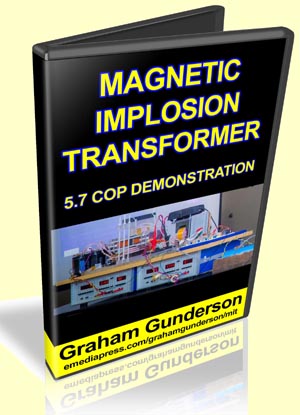
So many people want to see overunity demonstrations and at the Energy Science & Technology Conferences, you get to see live overunity demonstrations and this has been the case at almost every conference for the last 5 years.
This year, Graham Gunderson showed the Magnetic Implosion Transformer that he invented and it measured out at 570% more output than the input he paid for!
Get your copy here: Magnetic Implosion Transformer by Graham Gunderson
As a matter of fact, he can dial the input down until it goes negative, which means the COP (coefficient of performance) is infinite! Coefficient is the ratio between desired work done in a system compared to the work that we have to pay for.
Graham is one of the few experts in actually knowing how to properly measure input versus output in these kind of devices who actually has developed his own overunity technologies and this is one of the most astounding!
Get your copy here: Magnetic Implosion Transformer by Graham Gunderson
In his presentation, he actually includes some of the details that he originally thought about keeping secret, but he shared them with the entire audience anyway and you now have an opportunity to hear it yourself.



Comment